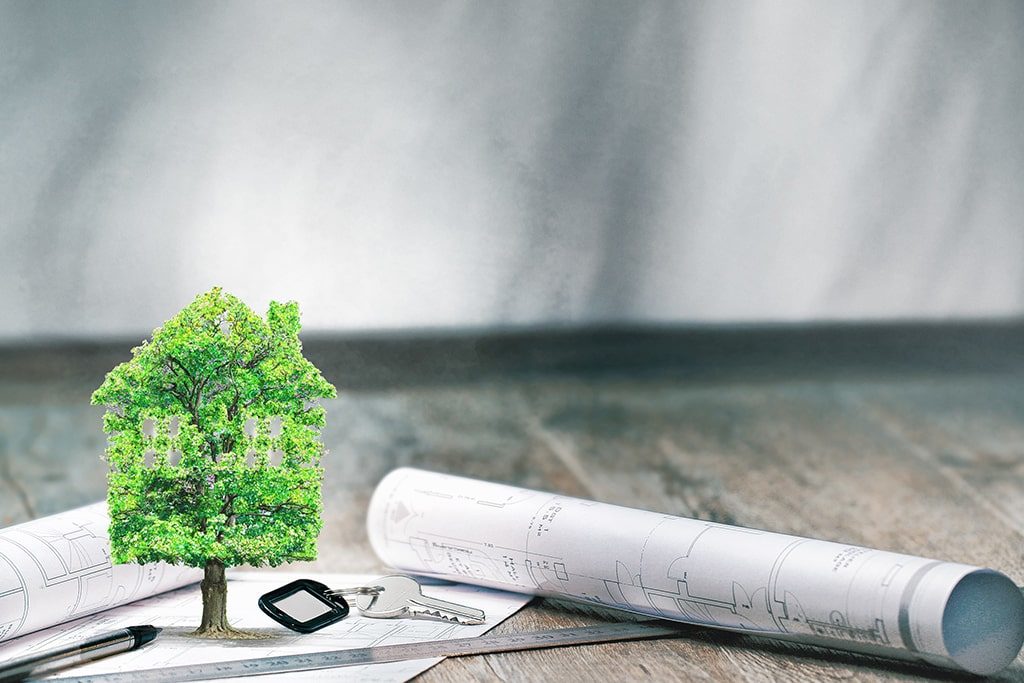Energy-efficient buildings and Demand Controlled Ventilation

How should the construction industry meet the ever-increasing needs for better indoor environment conditions and optimised energy consumption? Innovative mechanical ventilation solutions prove to be helpful.
Author

Monika Garbacz
Technical sales advisor – SMAY
The increasing building operating costs and environmental awareness among investors have contributed to popularising energy-efficient building construction. In Europe, the construction industry is responsible for the majority of greenhouse gas emissions.
Around 85% of produced energy is used for heating, cooling and lighting buildings as well as heating up warm utility water. The demand for energy can be reduced by using efficient heating and ventilation systems. However, designing and constructing energy-efficient buildings prove to be quite challenging to today’s architects and construction workers. The processes require particular diligence and using high-quality, state-of-the-art energy-saving solutions. The requirements for energy performance of buildings have been set out in detail in Directive 2018/844/EU. It also amends the Energy Performance of Buildings Directive (EPBD) and the Energy Efficiency Directive (EED). Its primary goal is to equip technical building systems with automation solutions that would enhance indoor environment conditions and optimise energy consumption.
Innovative mechanical ventilation solutions prove to be helpful
SMAY offers an innovative mechanical ventilation system designed specifically for the European market. It is available under the name iFlow. The solution was created to optimise building ventilation systems by implementing variable air volume (VAV) regulators.
Providing the right amount of air supplied by the ventilation system is indispensable for creating proper indoor environment. The supply of air varies not only depending on the type of room, but also the number of people occupying it. Buildings such as schools, office blocks, hospitals and museums require varying air supply at different times of day or seasons. It is impossible to determine the exact amount of air to be supplied due to the number of factors impacting the air flow rate. And so, ensuring low energy consumption in buildings requires solutions that would dynamically adjust certain parameters.
The Demand Controlled Ventilation (DVC) systems are one type of such solutions. By analysing different signals (e.g. current temperature in a particular room, CO2 concentration, user working hours, information from motion detectors or window sensors, etc.) we can adjust ventilation efficiency to current needs. This is specifically why the iFlow system was designed. It provides building users with both a high level of comfort and operating cost savings.
In order to maximise energy efficiency, the air flow rate should be adjusted to the changing number of people in the building throughout the day.
The amount of air supplied to unoccupied rooms should be reduced. Lower amounts of air translate into lower air drag in ducts and air handling unit components. This in turn results in significant energy savings from fans with inverters. To lower the air supply the intake and exhaust ducts should be equipped with VAV regulators. The regulators adjust the amount of air in the ducts based on external signals. The air flow may depend on the CO2 concentration in rooms. It is directly proportional to the number of people occupying a particular room. However, in order to ensure that the ventilation system works properly, every branch duct should be equipped with a regulator.
In rooms that require constant air supply the VAV regulators should be replaced with the CAV regulators. They maintain a given flow rate mechanically without additional energy consumption.
The iFlow system and VAV regulators optimise ventilation systems
The RVL-R regulators together with the iFlow system significantly improve energy efficiency of ventilation systems by reducing the amount of air supplied to rooms depending on the number of people occupying them. The system is equipped with a CO2 sensor that is integrated with a temperature sensor, motion sensors and a central control unit. It is also very easy to use both by administrators and users as it allows them to change particular room parameters. The system aims to fully open regulator dampers, which in turn minimises fan speed. This results in optimised energy consumption by fan motors. Additionally, lower air flow extends the life cycle of air filters, delivering further savings.
The iFlow system is perfectly aligned with the current trends in energy-efficient building construction. It provides electricity and heating savings while maintaining building user comfort. The iFlow system uses the most prominent features of the Building Management System (BMS) and can be used independently where an advanced BMS is not required. To keep up with the current trends, the system can be controlled from any part of the building with smartphone and tablet applications.
Basic features of the iFlow system:
• Measures and adjusts such parameters as temperature and CO2 emissions;
• Measures air quality parameters: VOC and humidity;
• Detects motion;
• Allows you to configure a room occupancy schedule individually for every room;
• Monitors room parameters and correct operation of VAV regulators;
• Controls the central unit and optimises ventilation system energy consumption;
• Equipped with a built-in web server that controls the system.
Benefits of the iFlow system:
• Reduces ventilation system operating costs;
• Controls VAV regulators and room parameters;
• Changes system parameters independently from a web server;
• Gets a dedicated solution with proven control algorithms.



